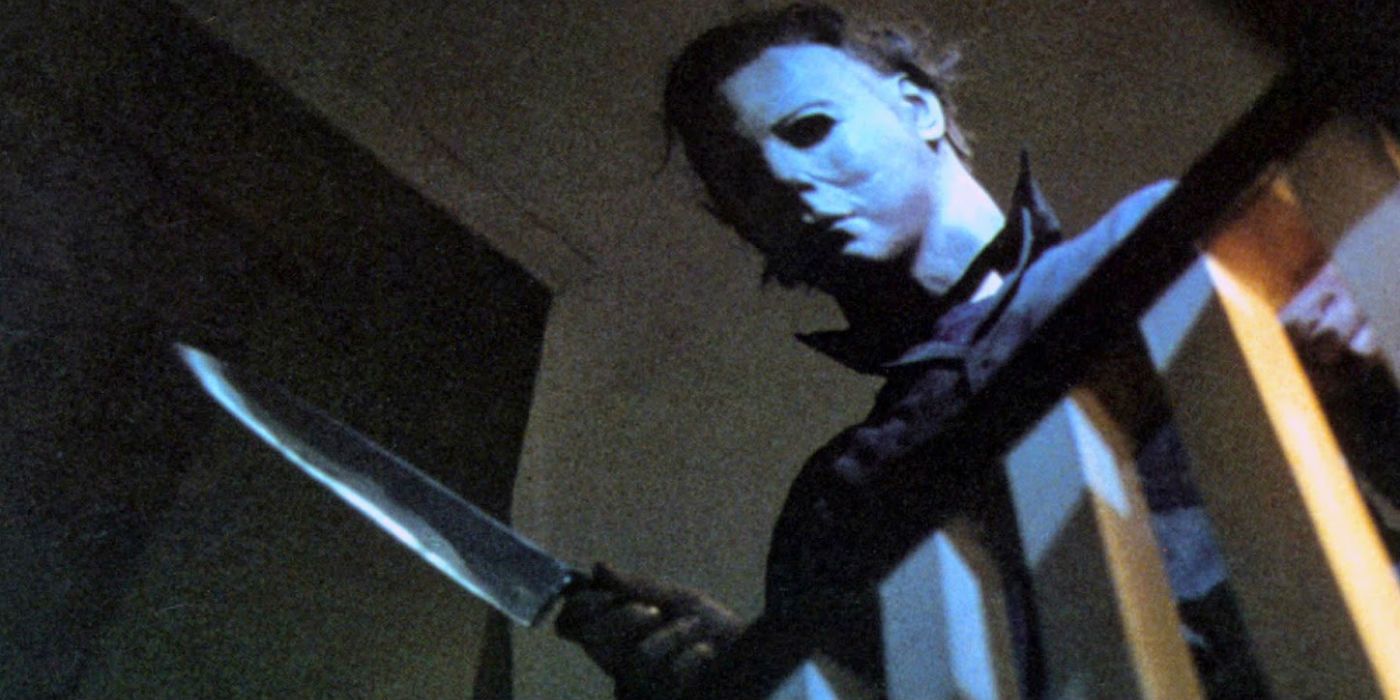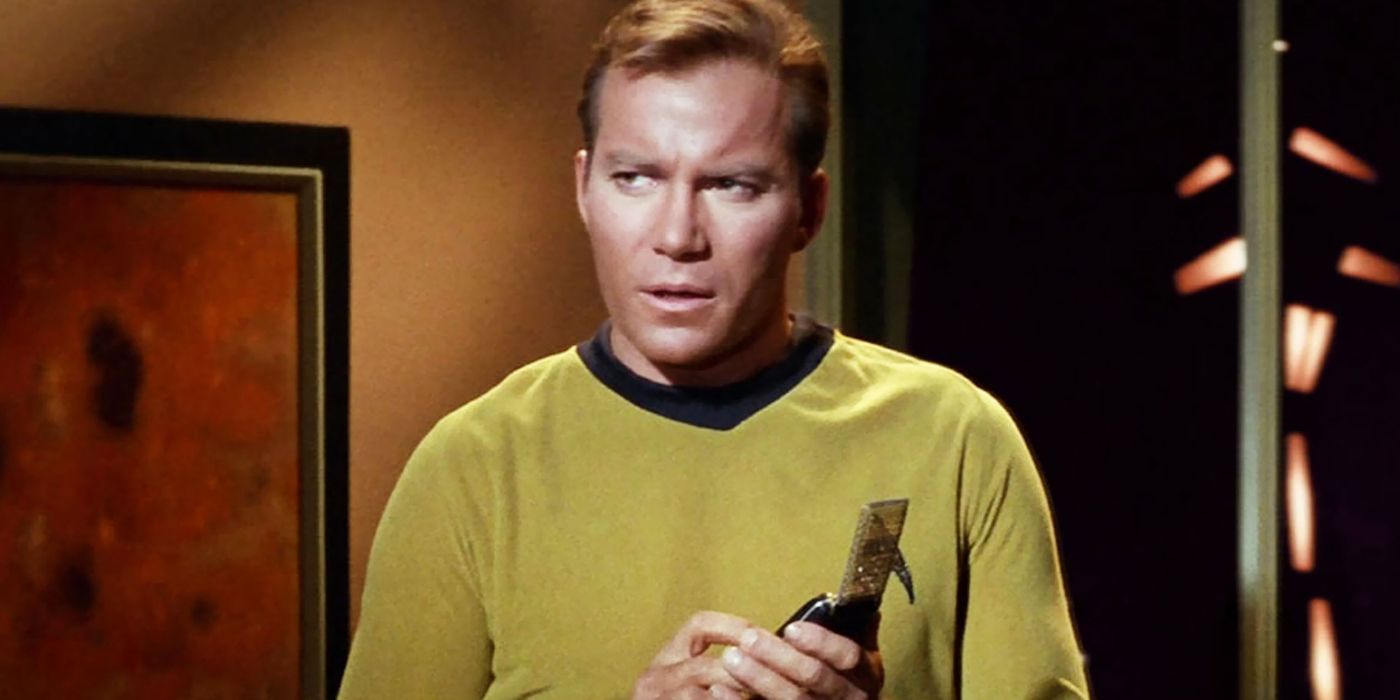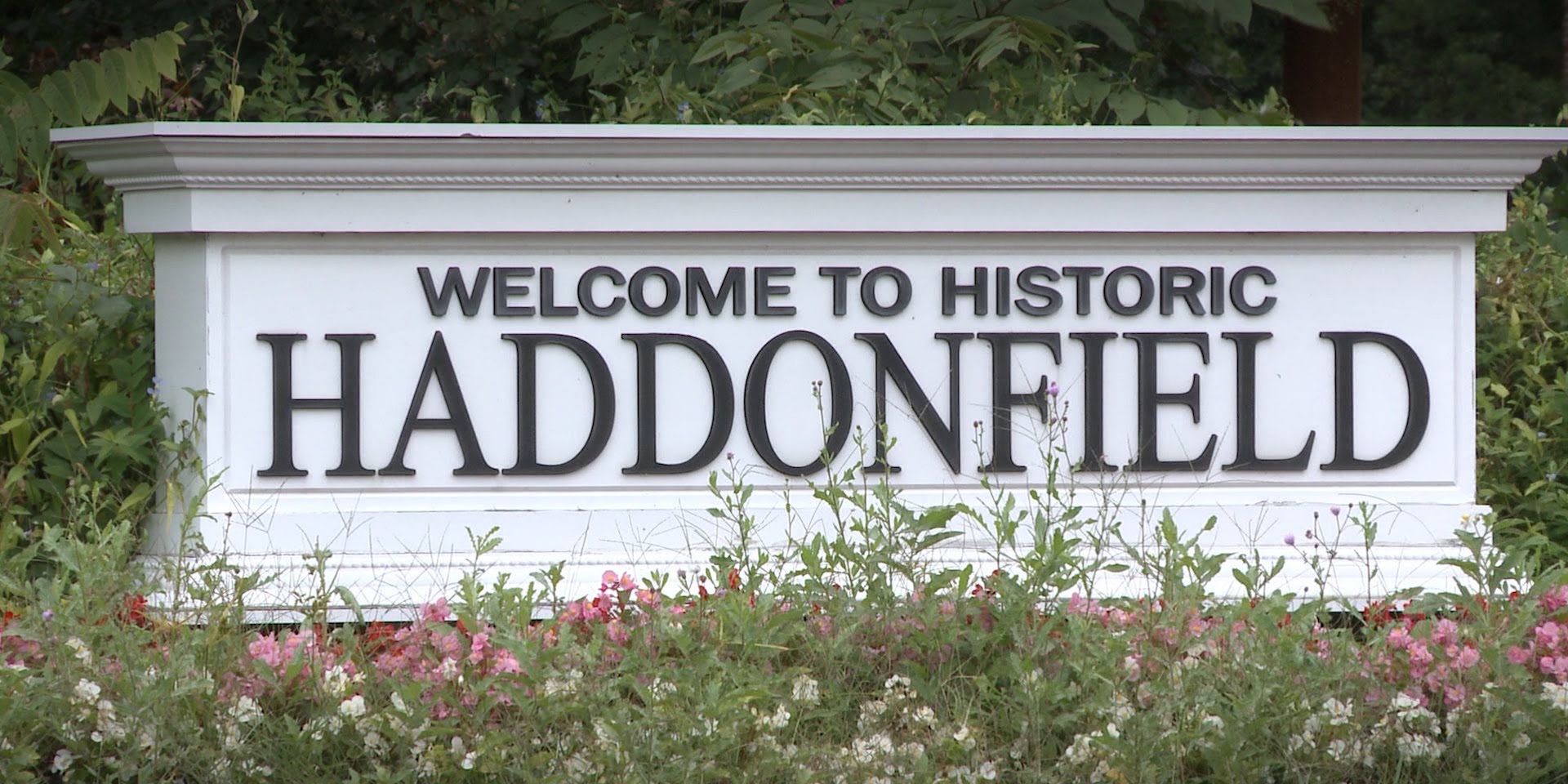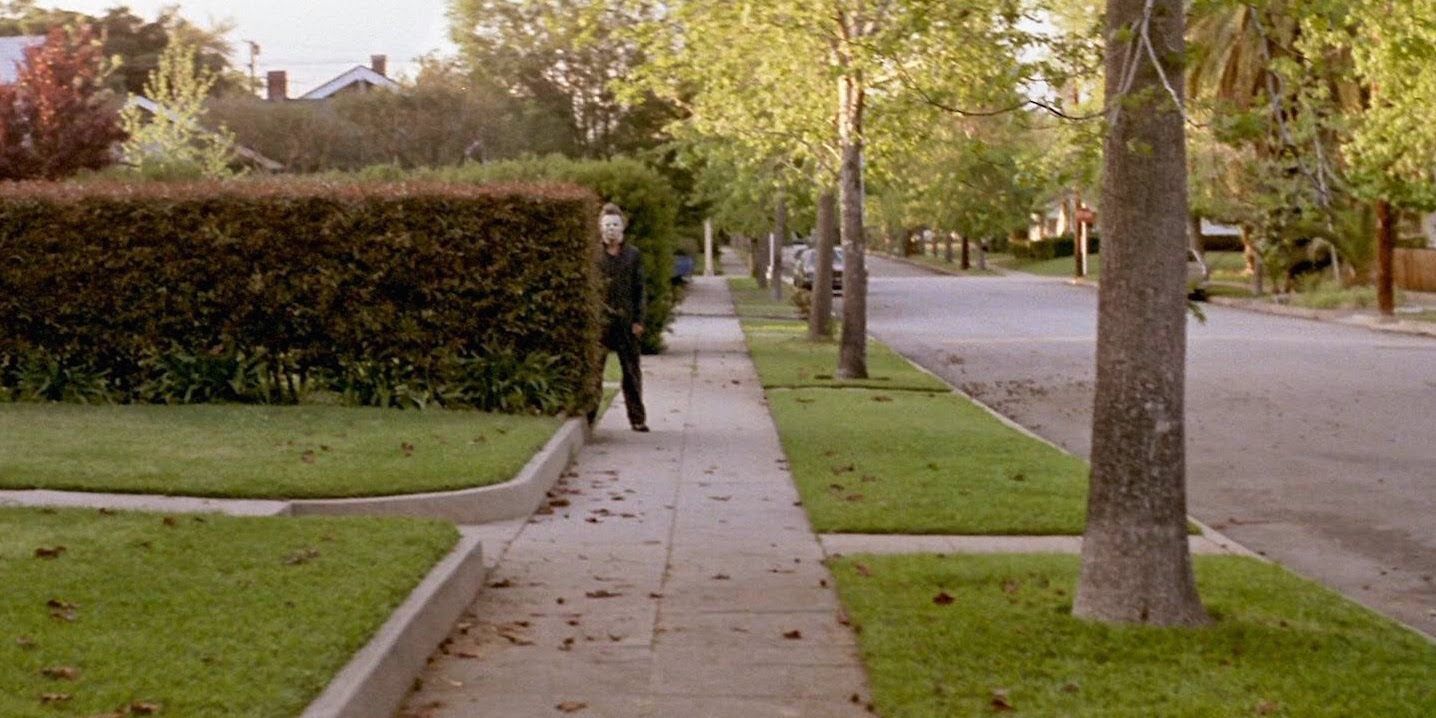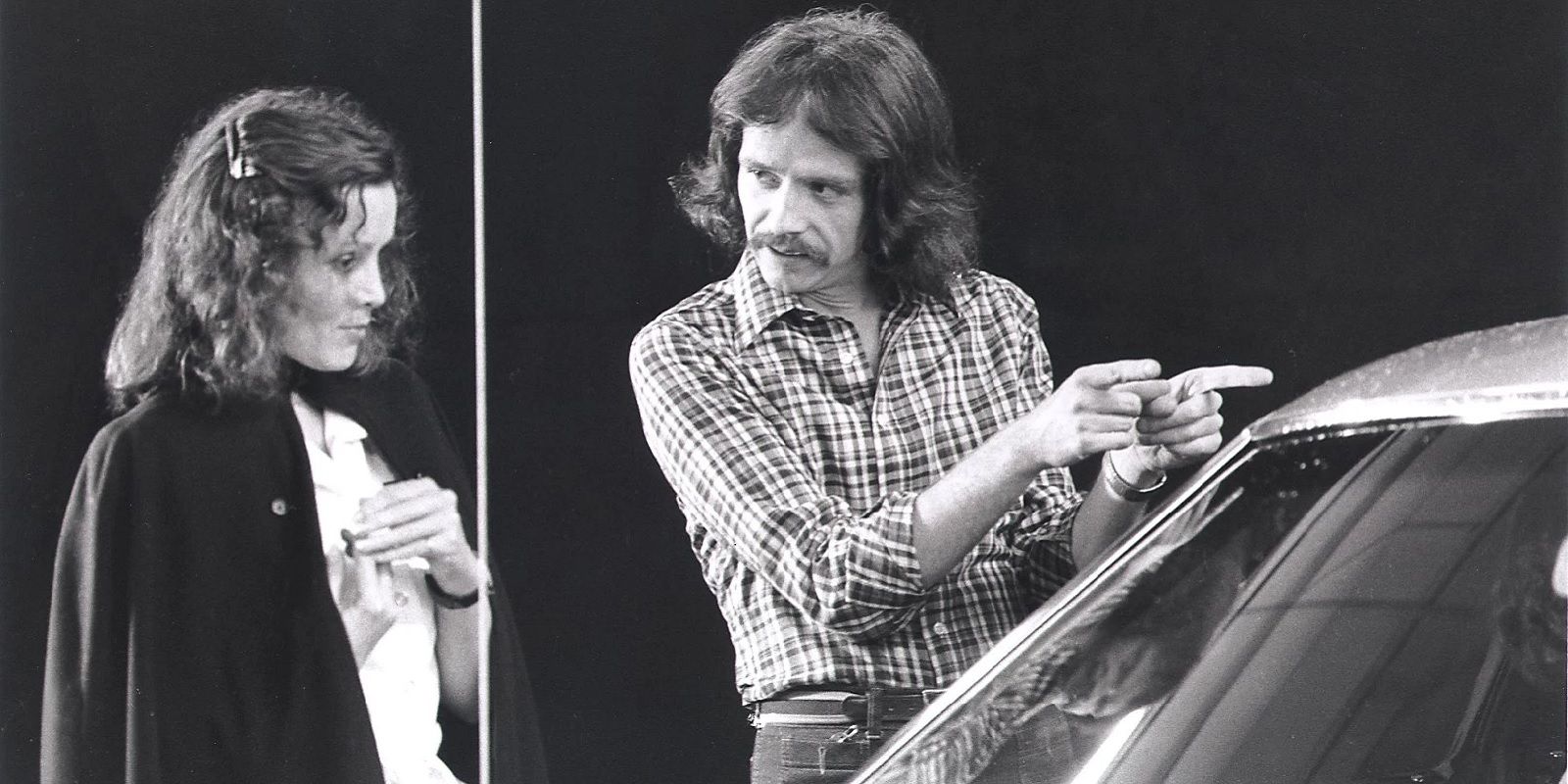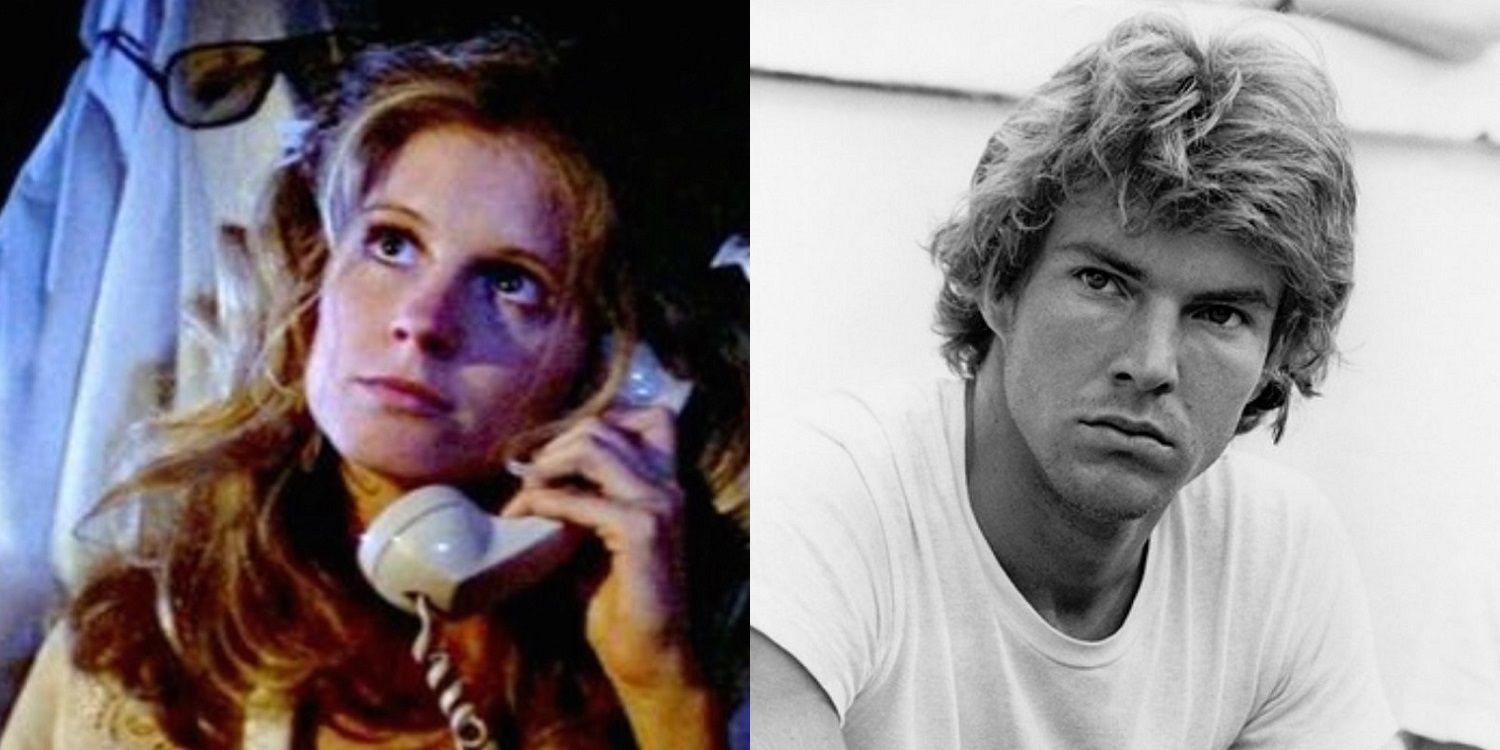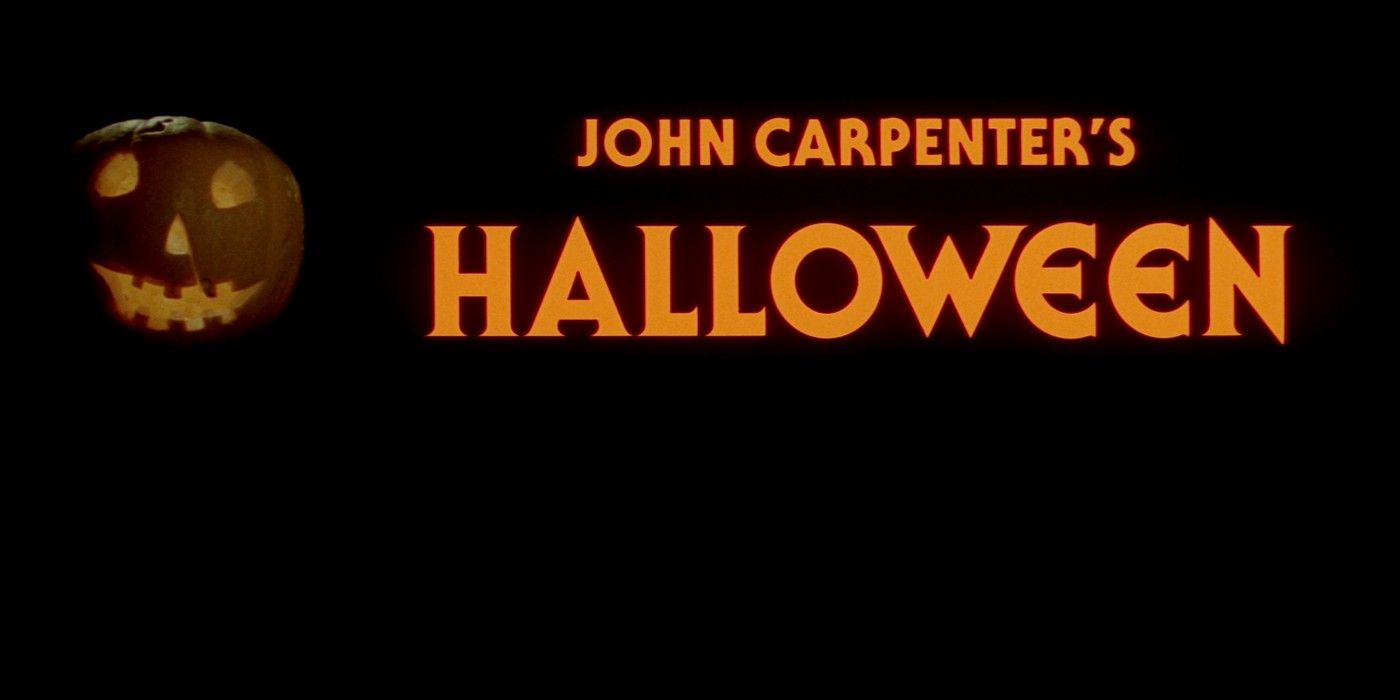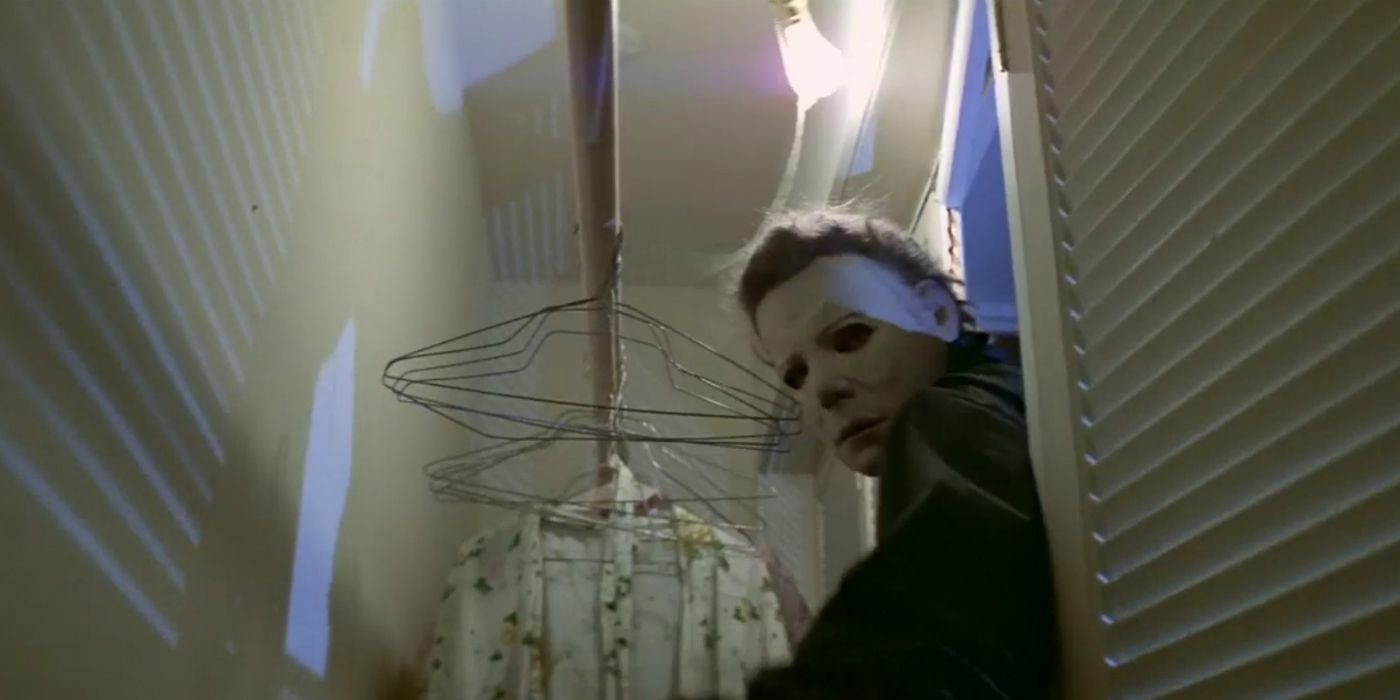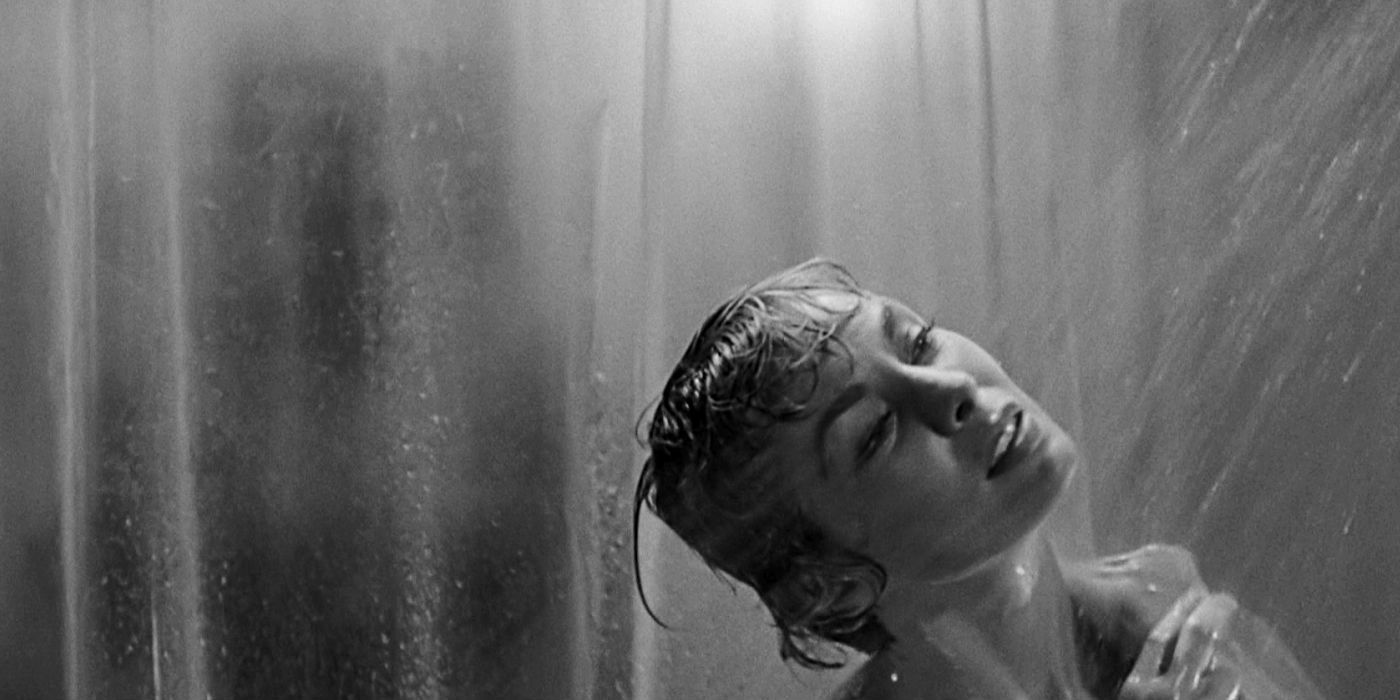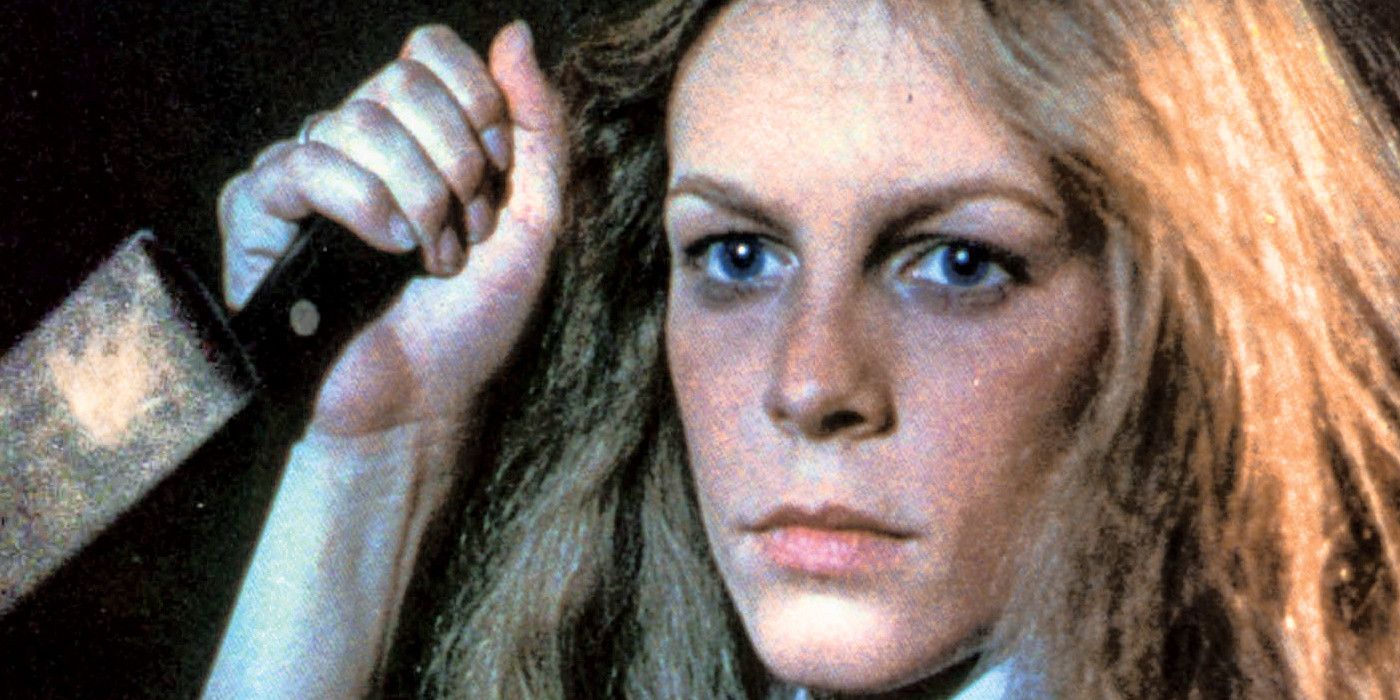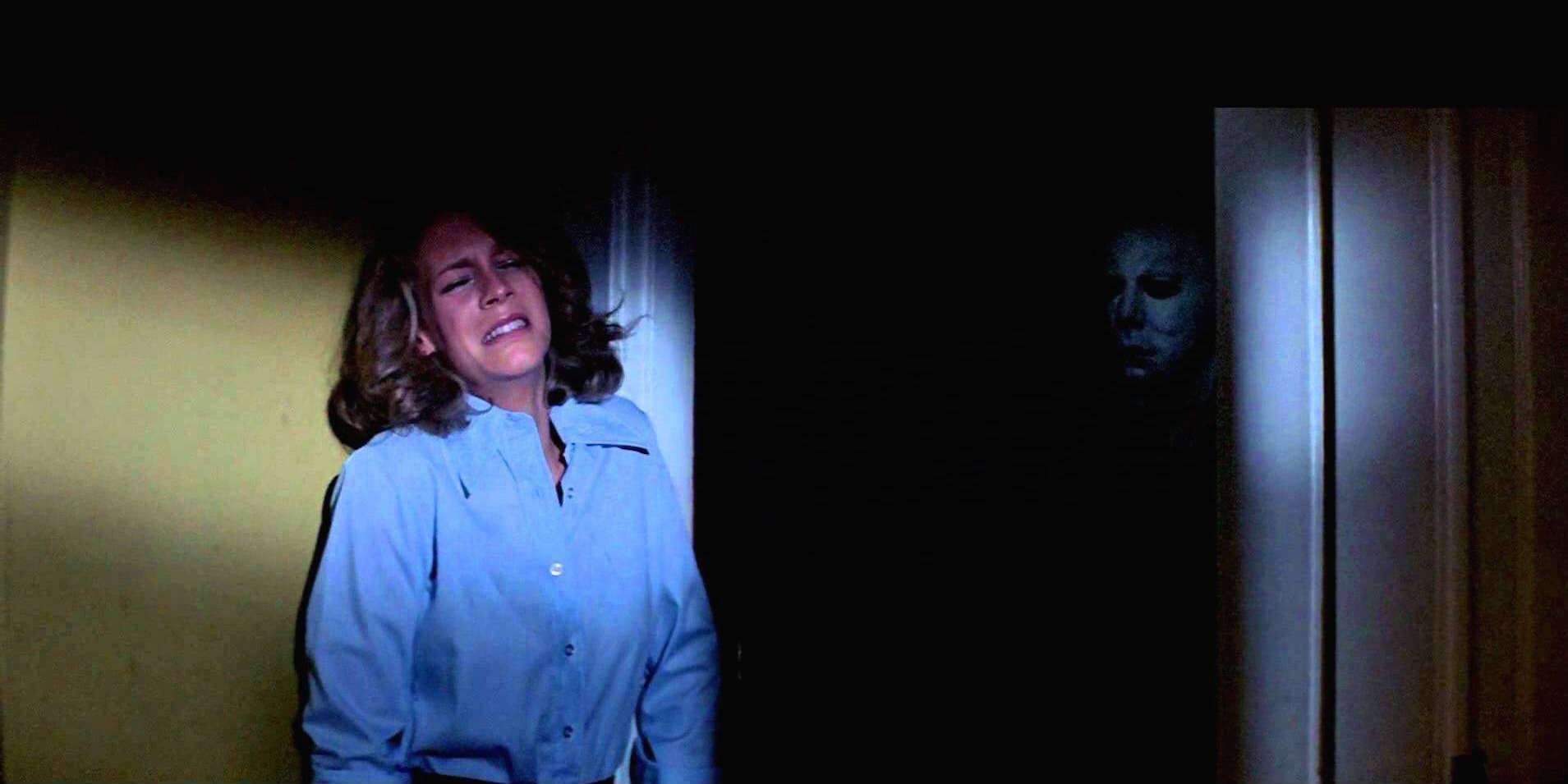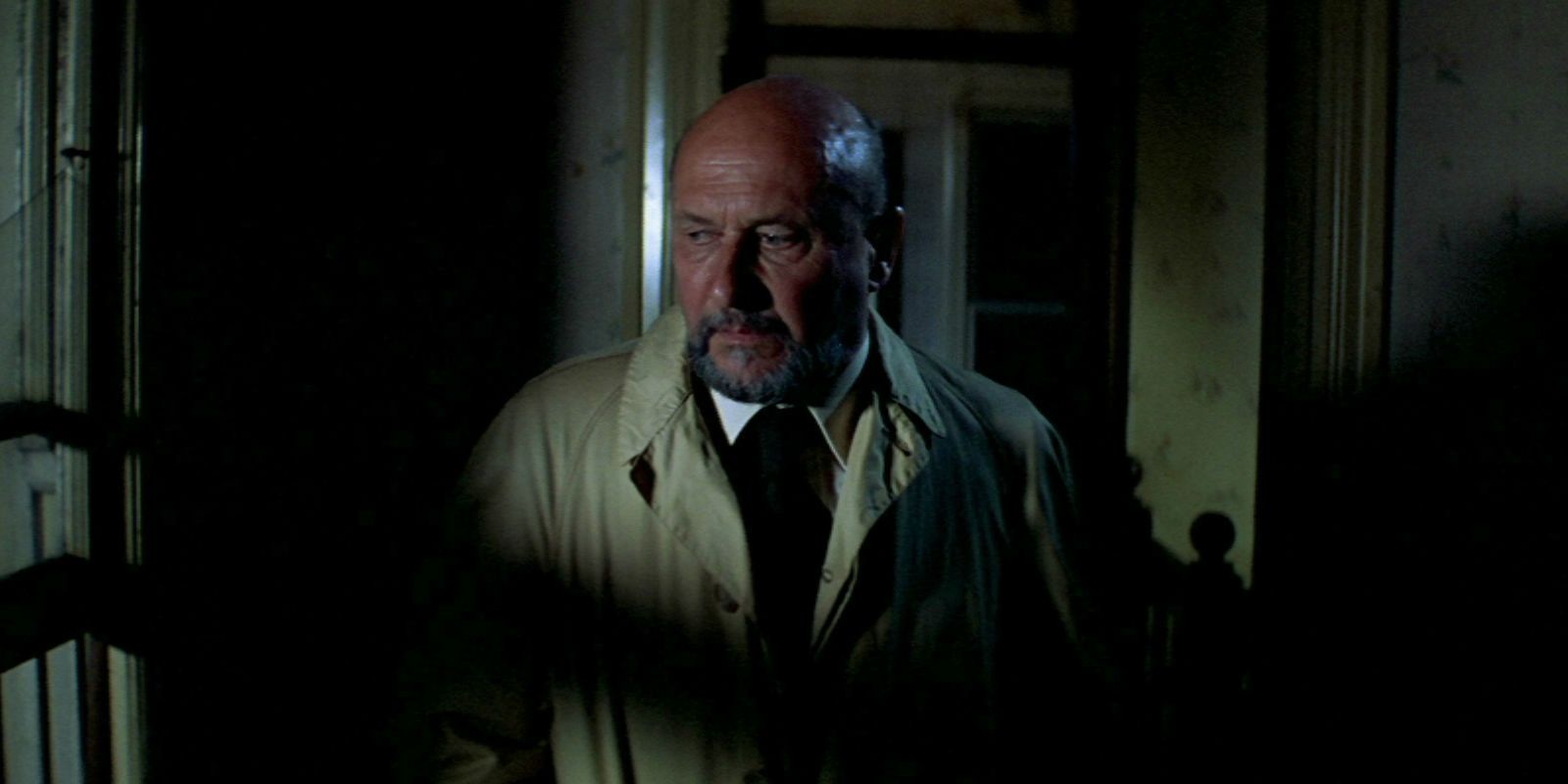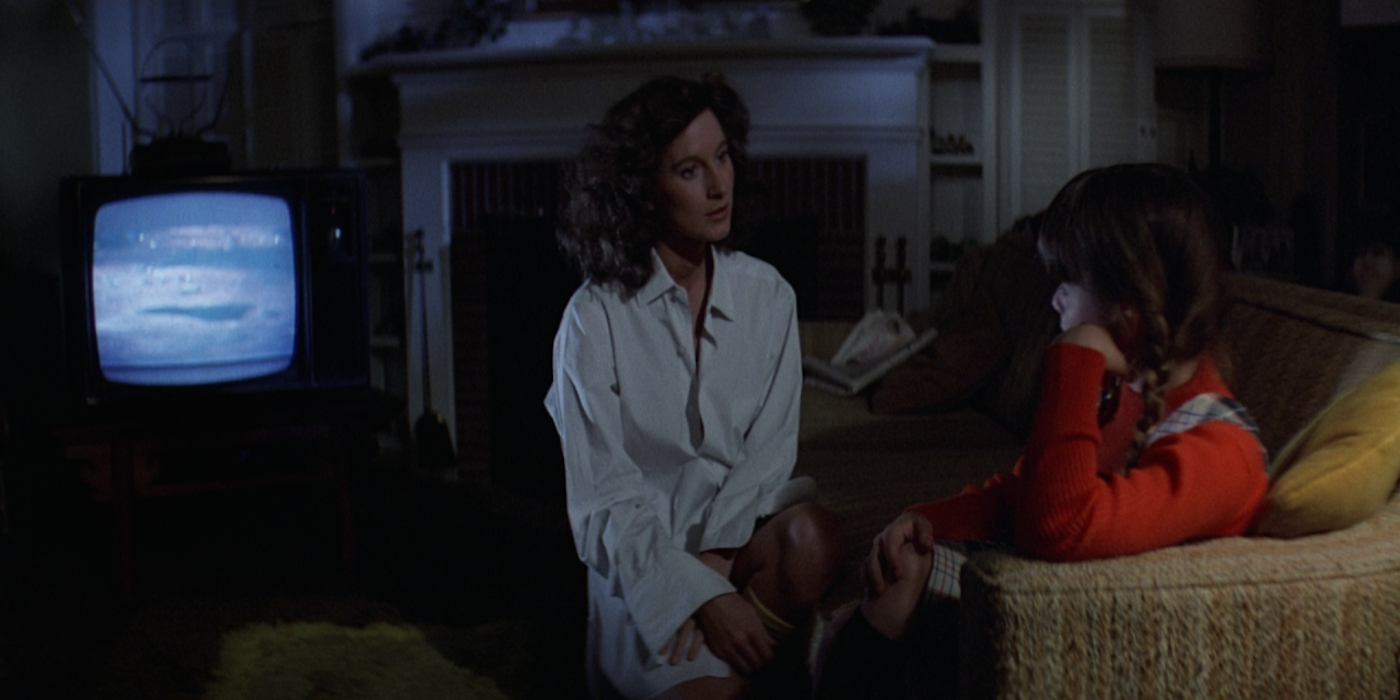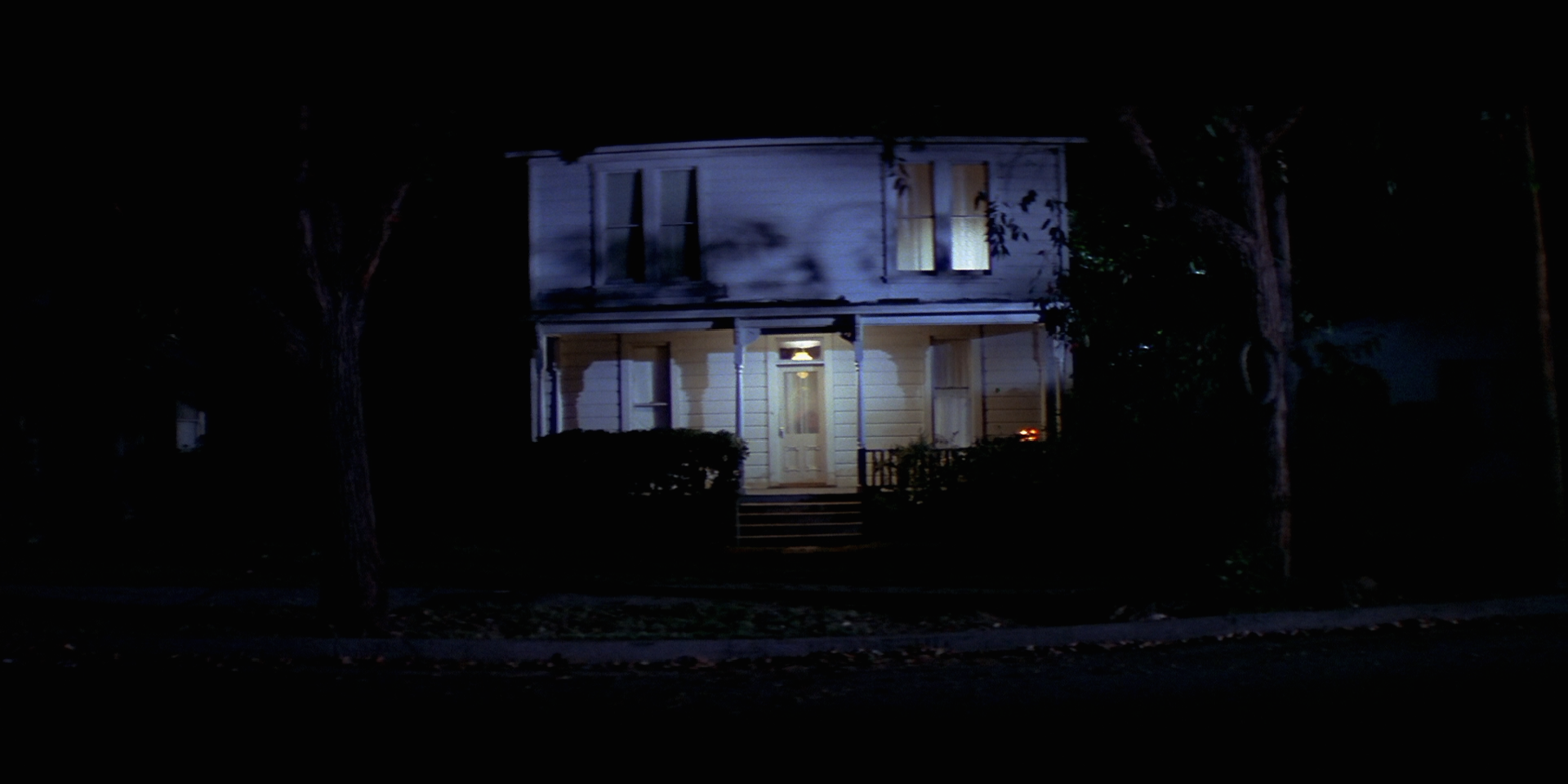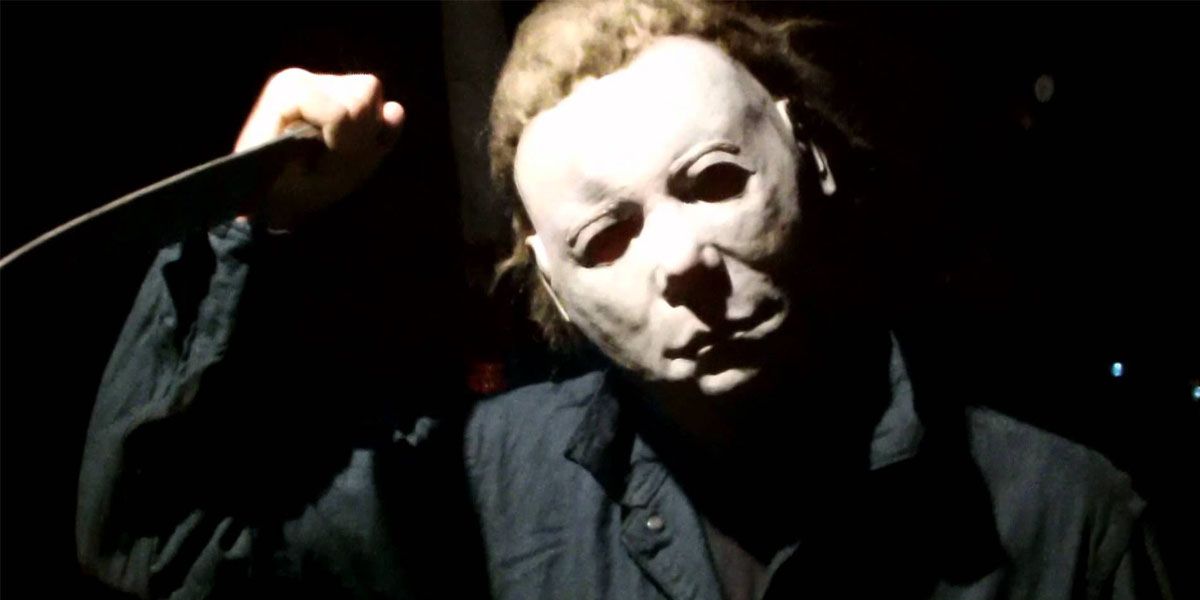John Carpenter's 1978 classic Halloween is one of the most iconic horror pictures of all time. Not only did it give birth to the slasher film genre, it seemed to encapsulate all that's mysterious and eerie about the October 31st holiday. It also established Carpenter as one of the most groundbreaking filmmakers of the '70s and '80s. Its villain Michael Myers caused countless nightmares, and inspired six sequels (there's even another one currently in the works) as well as a remake of parts one and two by director Rob Zombie.
So why has it endured and held up so well after nearly four decades? And what made it so influential? The proof is in the (bloody) pudding as they say. It all comes down to the cast and crew that helped bring it to life. So let's look at 15 behind-the-scenes facts about the production and genesis of Halloween that made everyone think twice about going trick or treating.
15. William Shatner: The Face of Evil
One of the most distinctive visual elements of Halloween is the creepy, expressionless mask worn by the murderous Michael Myers. But the creation of one of the most frightening masks in cinema has a surprisingly benign origin: actor William Shatner...or more specifically, his iconic Star Trek character, Captain James T. Kirk.
Working on a shoestring budget didn't allow for a prop department, so the production was forced to improvise with Carpenter's vision of an unnerving mask similar to the one used in the French film Eyes Without A Face. Producer Tommy Lee Wallace (who would go on to direct the Myers-less second sequel, Halloween III: Season of the Witch), discovered a Captain Kirk mask, albeit one that bore little likeness to Shatner himself. Unnerved by its blank appearance, Jones made it even more formless, painting it chalk white and removing the eyebrows and sideburns. Thus was born one of the most indelible images in horror film history. Shatner got a kick out of his unusual contribution in Carpenter's film, and claims that he went trick or treating in the mask the year after the film was released.
14. Haddonfield's Secret History
Halloween takes place in the fictional little town of Haddonfield, Illinois. But while the city as presented in the film doesn't exist, it has origins in the real world. Late film producer Debra Hill named the burg after her own hometown of Haddonfield, New Jersey. This wasn't the only homespun touch Hill would bring to the picture; the producer also had a hand in the screenplay, writing all of the dialogue between the teenage characters Laurie Strode (Jamie Lee Curtis), Annie Brackett (Nancy Keyes) and Lynda Van Der Klok (P.J. Soles), based on her adolescent experiences with friends in high school.
And the adjacent town of Smith's Grove, Illinois (the location of the sanitarium housing Michael Myers, before he makes his escape early in the film) also has real life origins. It's named after Smith's Grove Kentucky, a town close to Bowling Green, otherwise known as the childhood home of director John Carpenter.
13. Making Sunny California Look Like a Midwest Autumn
While the film may take place in Illinois, the on-set location of Haddonfield was in a much different region. Standing in for the sleepy Midwestern town was Southern California, or Pasadena to be more exact. Shooting in that environment proved to be a challenge for Carpenter and crew: how do you make a perpetually sunny city appear to be the home to a chilly Fall day in Illinois, especially given the fact that filming was to take place during Spring? The filmmaker, as always, proved a master at taking advantage of his limitations to execute his vision.
Working with cinematographer Dean Cundey (whose visual acumen is a hallmark of all early Carpenter films), Carpenter took extra care to obscure any stray palm tree in sight (not always successfully). But the most effective technique involved a bag of dead leaves, which were blown about by fans under conspicuously green trees. This simple visual element helped sell the seasonal aspect of the film, but it proved cumbersome for the crew, as they had to re-bag all the leaves before moving on to the next shot.
12. Killer Mistakes
The occasional stray palm tree wasn't the only visible error in Halloween. Even a classic film is going to have some gaffes, but in Carpenter's case, it just brings more charm to the proceedings. One notable error occurs in the scene where Annie and Laurie investigate a shrub where Laurie saw Michael move behind. You can catch a huge puff of smoke courtesy of John Carpenter, who was lighting up his cigarette too close to the camera.
In the end, that flub just adds to the ominous atmosphere right? The same could also be said of a stray crew-member seen hiding in the shadows as the phone rings incessantly in Lindsey Walker's (Alex Richards) house.
A few other notable errors include a wrench taped to Michael Myers hand to aid in smashing a car window, and a magical shift from day to-night as Laurie and Annie drive a mere few blocks. Speaking of cars, every automobile in the picture has visible California license plates. Still, you've gotta cut the filmmakers some slack -- Halloween was shot in a mere 20 days.
11. Dennis Quaid Was Supposed To Be In The Film
P.J. Soles, was "totally" one of the most memorable characters in Halloween, playing the ditzy and doomed Lynda Van Der Klok. At the time of filming, she was dating actor Dennis Quaid (they would marry that same year), and Quaid was initially pegged to play her (similarly doomed) onscreen boyfriend Bob Simms. Unfortunately, a scheduling conflict prevented him from taking the part.
That role would eventually be filled by John Michael Graham, and it remains his only acting credit to date. Quaid and Soles did reportedly share a memorable moment with the film however, while watching it at an early screening. During the notorious scene where a bare-chested Lynda utters "see anything, you like?," an overly excited man in the audience screamed "Hell yes I do!". Soles, who found the outburst hilarious, had to restrain Quaid from physically confronting the cat-caller, which would have surely freaked out an already terrified audience.
10. Halloween Wasn't The Original Title
One has to wonder if Halloween would have been as big of a success if it was titled The Babysitter Murders. The odds aren't likely, but that was indeed the original title for Carpenter's project. In a shrewd moment of marketing savvy, film producer Irwin Yablans suggested the film's title should reflect the storyline's holiday setting. His promotional moxie was a stroke of genius, resulting in a title that Carpenter was astounded to discover had never been used by any film before.
Due to Halloween's huge success, it inspired a slew of holiday-themed horror film knockoffs, including Friday The 13th, Silent Night, Deadly Night, April Fool's Day, New Year's Evil and My Bloody Valentine. Be that as it may, Halloween wasn't actually the first slasher movie ever set on a major holiday -- that honor instead goes to Bob Clark's 1974 film Black Christmas, which proved to be a notable influence on Carpenter's film.
9. The Man Behind The Mask
While his face is never seen (the briefly unmasked Myers was played by Tony Moran), Nick Castle's contribution to Halloween is immeasurable. While not an actor of great renown, his portrayal of killer Michael Myers, aka The Shape, has inspired millions of nightmares for moviegoers the world over.
An associate of Carpenter dating back to their work on the 1974 sci-fi comedy Dark Star, Castle was tapped by his friend to play Myers for just $25 a day. Many of the killer's most memorable moments -- from the creepy head-tilt as he admires his handiwork to his eerie automaton rise from presumed death at the film's conclusion -- were improvised.
Castle would go on to work behind-the-scenes in the film industry, co-writing the screenplay to Escape From New York with Carpenter, as well as directing films like The Last Starfighter and Dennis The Menace. He also performed alongside Carpenter and Halloween producer Tommy Lee Wallace as The Coup De Villes, a musical group best known for playing the title theme (and music video) for Carpenter's cult classic, Big Trouble In Little China.
8. Hitchcock's Influence
The films of Alfred Hitchcock were a formative influence on the works of John Carpenter, and Halloween is in many ways an homage to the Master of Suspense's Psycho. Donald Pleasance's character Dr. Loomis was named after Psycho's Sam Loomis (played by John Gavin), the love interest of Janet Leigh's protagonist Marion Crane. Young Tommy Doyle (Brian Andrews) bore the namesake of a supporting character in a different Hitchcock film, Lt. Thomas J. Doyle (played by Wendell Corey) in the voyeuristic murder classic Rear Window.
Hitchcock wasn't Carpenter's only influence, of course. The ambitious opening tracking shot was an homage to the beginning of Orson Welles' 1958 film noir classic, Touch of Evil, while the character of Sheriff Leigh Brackett shared the same name as the famous screenwriter of films including Rio Bravo, The Big Sleep, The Long Good Bye, and The Empire Strikes Back. Minus the sheriff bit, of course.
Psycho's most vital influence on Halloween would be in the casting of Jamie Lee Curtis as the final girl heroine Laurie Strode. The actress' mother was none other than Janet Leigh herself.
7. Jamie Lee Curtis Almost Didn't Get The Part
Halloween was the film that made Jamie Lee Curtis a star. It was her acting debut, one that earned her the honorary title as one of the original "Scream Queens," leading to other horror film work including Terror Train, Road Games and The Fog (her status is well represented with her role on the current Fox Television series, Scream Queens).
But what you may not know is that Curtis wasn't the first choice for the role. That honor went to actress Anne Lockhart (daughter of actress June Lockhart), best known for her role as Lieutenant Sheba on the original 1978 science fiction television series Battlestar Galactica. When Lockhart turned down the role, Halloween producer Debra Hill realized that Curtis had a unique, marquee value ideal for the role, given her mother played the lead in Psycho. In a wonderful bit of casting synergy, both mother and daughter would appear in the Halloween sequel Halloween H20: 20 Years Later.
6. The Fear Meter
Since Halloween was Curtis's first acting gig, she was understandably anxious about her performance, and Carpenter did his best to ease her nerves on set. This was particularly reassuring on the first day of filming, as Curtis felt she had been a disaster. However, a late night call from the filmmaker praising her performance helped to boost her confidence.
The actress wasn't used to film production, in that scenes are usually filmed out of sequence. To help keep her focused in the scenes with Michael Myers, the director created a "fear meter." This was a system ranging from 1-10 on how frightened he wanted her portrayal onscreen to help her sustain the needed intensity for continuity's sake.
The fond rapport between Carpenter and Curtis led to her contribution on his future films, including a reprisal as Strode in Halloween II (which Carpenter wrote and produced), as well as a performance in The Fog and a voiceover cameo in Escape From New York.
5. The Random Reason Donald Pleasance Played Dr. Loomis
The most high-profile member of the cast of Halloween was British thespian Donald Pleasance. His salary ($40,000) was one of the film's biggest expenses. He was worth every penny, however, as his gravitas and professionalism gave the film a grounded feel to offset its low-budget limitations and threadbare plot. However, just like Curtis, he wasn't the first actor who was offered the role. The first choices were fellow British actors Christopher Lee and Peter Cushing, both of whom turned it down. Lee would later call it the worst business decision of his career.
Pleasance wasn't thrilled with the script, as he found that he could barely relate to it at all. The reason he accepted the part? His daughter was a huge fan of Carpenter's 1976 crime thriller Assault on Precinct 13 (Carpenter's ominous synth-score being her favorite aspect).
Carpenter recounted his favorite memory of working with Pleasance in the Halloween DVD commentary track, saying that in the closing scene, the actor asked if he should act shocked in the finale when Michael Myers body disappears, or instead look resigned, as if to say, "I knew this would happen." The director shot it both ways, but used the latter take.
4. The Television Cut Has Additional Scenes
John Carpenter knew that Halloween would need to be edited for its initial premiere on network television, given that it contained several scenes featuring profanity and nudity (and bits of graphic violence--although it's worth noting Halloween is quite possibly the least gory film in the slasher genre). By excising about 12 minutes of footage, he needed to fill the vacuum, so he shot several additional scenes.
These additions include footage of Dr. Loomis confronting Myers as a child ("You've fooled them, haven't you, Michael? But not me."), along with Loomis confronting a hospital board about the dangers of housing Myers, and additional scenes of Jamie Lee Curtis, who had to wear her hair in a towel to disguise her now-shorter haircut. While not essential footage, it does add some backstory to the film, as well as a potential spoiler for Halloween II. An extended edition DVD was released in 2001, adding these new scenes to the original theatrical cut.
3. The Ambitious Opening Shot
Carpenter wanted to make Halloween look far more expensive than its budget would allow, and so he gambled on an extremely ambitious opening scene that featured an extended camera take with a Panaglide -- an early version of the Steadicam -- which provided for smooth movements with a handheld camera using a harness. This technique allowed viewers to see the world through Michael Myers' eyes, eventually putting a mask over the camera before he kills his sister Judith (Sandy Johnson).
Not only was this long camera take complicated (the scene actually had two cuts, which Carpenter cleverly disguised), but the set presented its own set of problems. The opening scene was actually the last shot filmed during production, and the Myers house had been previously made to look decrepit. Cast and crew scrambled to make it pristine, adding new wallpaper and furnishings, making for a drastic makeover...and one of the most iconic opening scenes in horror history.
2. It Broke Box Office Records
Halloween is one of the most profitable films of all time. Made for a mere $300,000, the horror movie would gross more than $47 million in the United States and $70 million worldwide (the equivalent of $267 million when adjusted for inflation). This is all the more impressive given the initial negative critical reaction it received upon its release on October 25, 1978. Esteemed critic Pauline Kael blasted both the film and Carpenter, saying "Maybe when a horror film is stripped of everything but dumb scariness...it satisfies part of the audience in a more basic, childish way than sophisticated horror pictures do."
The film's success was gradual, building entirely by word of mouth because of the flick's scant advertising budget. Unlike in the modern cinematic landscape, where a film often lives and dies on its opening weekend, Halloween had a slow roll out, premiering in various cities over a matter of months. Its legacy is now assured, with a current score of 92% on the review aggregate site Rotten Tomatoes. It even once held the record for the highest grossing independent film in history, having only been dethroned in 1999 by The Blair Witch Project (which grossed $248.6 million on a $60,000 budget).
1. The Unlikely Origin of The Halloween Theme
One of the most distinctive elements (if not the most distinctive) of Halloween is its hauntingly minimalist musical score, which was composed by Carpenter himself. While the director was inspired by both "Tubular Bells" (the theme to The Exorcist) and the soundtrack work of Italian prog-rockers Goblin, he also utilized some music theory he learned as a child. "The rhythm was inspired by an exercise my father taught me on the bongos in 1961, the beating out of 5-4 time," he said.
He transposed that technique to piano, and one of the most iconic themes in cinema history was born. Other pieces of note include the more ethereal "Laurie's Theme" (inspired by the works of Psycho film composer Bernard Herrmann) and the ominously plodding two-note piece, "The Shape Stalks/The Shape Lurks".
What makes Carpenter's score all the more impressive is that it was composed in just three short days using a makeshift recording setup. This attempt to save money from hiring an orchestra proved an unlikely beast of invention. Its impact upon the film was immeasurable, as test reactions to the film skyrocketed after the score was added.
---
So that wraps up 15 facts about the making of John Carpenter's Halloween! What other factoids behind its production would you add to the list? Tell us in the comments.

